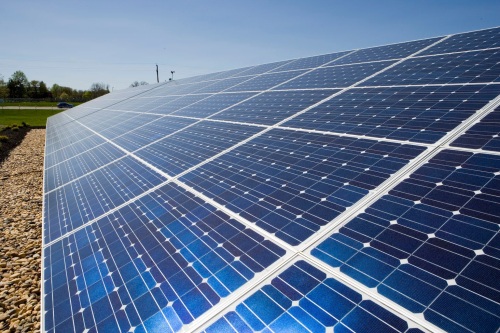Researchers from MIT have published a proof-of-concept paper that proves an organic dye called “pentacene,” when applied to a photovoltaic cell, can generate two electrons from a single photon.

Researchers have discovered an organic material that could improve the overall conversion efficiency of solar cells.
The paper, published in the April 19 issue of Science magazine, details how Jiye Lee, Nicolas Thompson, Marc Baldo, and six others were able to accomplish this feat.
The problem with solar cells nowadays
In layman’s terms, solar cells are not the most efficient form of power generation. You see, if an incoming photon doesn’t have enough energy, the solar cell won’t absorb it. If, on the other hand, the photon has too much energy, the excess is wasted as heat.
What’s more, a silicon solar cell typically can’t generate more than a single electron per photon.
So, for a while now, scientists, engineers, and researchers alike have been searching for a way to increase the overall conversion efficiency of solar cells.
The group’s discovery
In their paper, the MIT group details how they were able to use the organic-based material pentacene to achieve “singlet-exciton fission,” a phenomenon in which an arriving photon generates two excitons that can be made to yield two electrons.
Singlet-exciton fission has been accomplished in the past, but only through the use of quantum dots and deep-ultraviolet light. What the MIT group has proven is that this process can be effective using organic material and natural lighting instead.
Outlook
Unfortunately, what’s not known at this point is why it works. All the group knows is that it is an effective approach to achieving the fragmentation.
Also, the pentacene cell has proven to work only with a narrow band of visible light so far. To be feasible and make it to market, the technology will obviously need to work when exposed to a broader range of light.
Based on what the group has seen, Baldo believes that it should be possible to develop a pentacene coating for silicon solar cells that boosts total conversion efficiency from the present day rate of 25% up to 30%. The next step is to develop the technology that can do this.
Download the paper: External Quantum Efficiency Above 100% in a Singlet-Exciton-Fission–Based Organic Photovoltaic Cell (purchase fee).
Story via: scientificamerican.com
Advertisement
Learn more about Electronic Products Magazine





